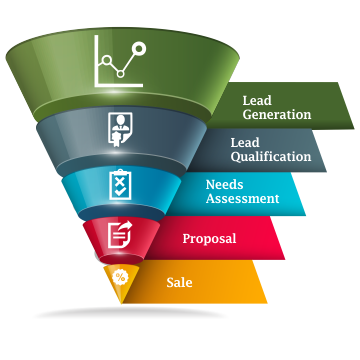What is your Selling Strategy? Does it make Sense? Is it Working?
 One way to assess the effectiveness of a selling strategy walking in the door is to review all the sales prospects, customer close rates and the revenue pipeline. Have sales been increasing? Across all products or only some? Across all sales regions (or sales persons) or only some? If metrics to answer the preceding questions don’t exist this is your first red flag and a great place to start, because you can’t improve what you can’t measure or see. Is your team using SalesForce.com, or some comparable tool? If so, are they using it in an effective and impactful way?
One way to assess the effectiveness of a selling strategy walking in the door is to review all the sales prospects, customer close rates and the revenue pipeline. Have sales been increasing? Across all products or only some? Across all sales regions (or sales persons) or only some? If metrics to answer the preceding questions don’t exist this is your first red flag and a great place to start, because you can’t improve what you can’t measure or see. Is your team using SalesForce.com, or some comparable tool? If so, are they using it in an effective and impactful way?
Asking these kinds of questions can lead to many insights. For example, if you have one or two regions or sales people doing well, you probably have a sell-able product but may need training, collateral or a sales staff upgrade to have broader success. If you are successful selling some but not all products, you may find that some are not well marketed, understood and supported or they may not be suitable for your current customers. If only some regions are successful, you can likely take what is working from one region and apply it to another. The point is that these questions allow you – and your team – to learn fast. What is important in this discovery phase is to ask lots of questions of many different team members to get as much insight as possible. What does the finance team think? What about engineering? What about OPS?
The next thing to assess is your “paths to market”. Are you selling direct? Through channels? Are you running marketing campaigns with webinars and using industry lists to identify new prospects? Using inside sales representatives to reach out to potential customers? If you are using multiple paths, which ones are working the best? What does your selling team have to say about your website, sales tools and collateral? The sales process also needs to make sense. In many cases, as companies grow, they outgrow their initial selling process but fail to make the changes needed to really grow the business. Again, critical but constructive thinking is very important.
Finally, it is important to understand the sales process. What actual processes does the sales team use? Is there a formal process at all? Do you have a well defined pipeline process that addresses lead generation, lead qualification, needs assessment, customer engagement, proposal and finally the forecasted sale? Do you track your sales closure rates? Does your CRM tool accurately help you track this? How is data about each transaction captured for market intelligence and planning? How does the sales function provide forecasting to manufacturing in order to drive demand? Answers to these questions provide you with a lot of information regarding the maturity level of the sales team and what items you may need to prioritize for repair.
